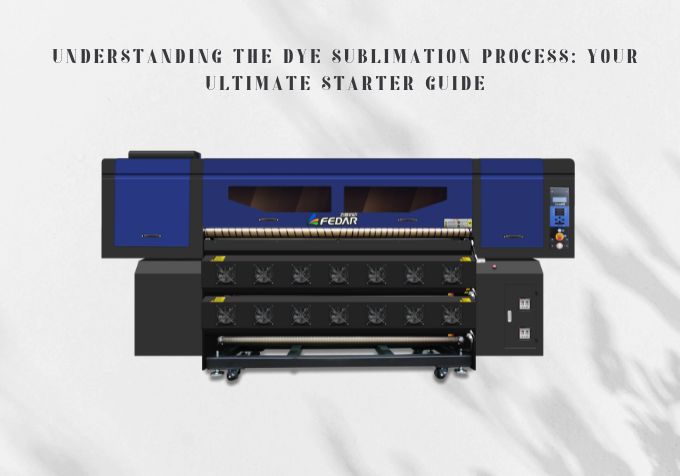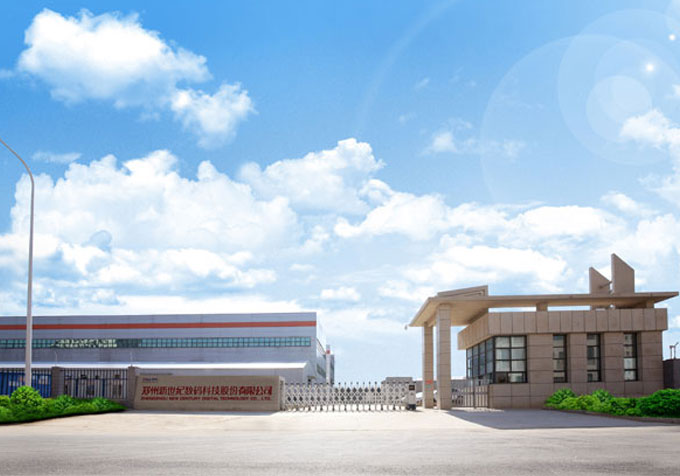28
Oct

Have you ever wondered how some regularly used products have such appealing and vibrant designs that never seem to fade away or peel off? Well, it is not a magic trick but a very efficient and versatile technique called dye sublimation. And understanding the dye sublimation process is the first step toward mastering this art.
In this ultimate guide, we'll walk you through every ins and outs of dye sublimation printing, from its working principles to its importance and why Fedar is the ideal choice for all of your dye sublimation demands. In the end, we'll also share some handy tips to help you get started like a pro.
Sublimation is a procedure where a solid material is heated and goes straight to a gas phase without turning into a liquid. Quite an intriguing notion. Right? But how does this link to printing? Well, let us walk you through it.
In dye sublimation printing, the ink is stored as a liquid in the sublimation printer. When it is printed onto transfer paper and dries, it solidifies. To transfer a design, the paper is heated to a specific temperature (usually between 350°F and 400°F), which causes the ink to sublime and turn into a gas.
During the transfer process, a special kind of paper with solid dye particles is pressed against the substrate, like ceramic, fabric, or polymer material. The severe heat and pressure let the ink permeate the absorbent surface, unlike traditional inkjet printers, where the liquid ink sits on top of the print medium.
As the ink molecules cool down, they solidify inside the substrate and become a permanent part of it.
Here's a closer look at the fundamental steps of the dye sublimation process:
Graphics are selected or created using Raster Imaging Processor (RIP) software and fused into a master layout file. For example, if you're printing a sports jersey, the master layout file will contain graphics for each part of the garment; after printing is complete, the jerseys will be sewn together.
Then the file is transferred to the printer, which prints onto the paper with the chosen sublimation ink.
Next, the paper is arranged facing the print medium (e.g., a roll of polyester fabric), and both are fed into the roller or heat press.
The ink is heated at such a high speed that it instantly evaporates. This rapid heating forces the pores of the material to open for a brief period.
Once the heat is removed, the fabric's pores close, trapping the ink permanently. As a result, the printed design will have less to no fading over time.
When utilizing dye sublimation, you can achieve sharp and vivid prints on a variety of materials, including synthetic fabrics like polyester. It works great on items such as t-shirts and athletic apparel, floor mats, mouse pads, trade show banners, coffee mugs, and mobile phone cases.
But that's not it. Dye sublimation can also be used to print on glass, tiles, or aluminum coated with polyester.
Dye sublimation printing also shines in:
Quality: The procedure of dye sublimation intricately blends all colors and simultaneously processes them, resulting in a seamless and vibrant image.
Long-lasting: Unlike traditional inks, which sit on top of the substrate, dye sublimation ink is embedded throughout the material, so it is less likely to fade or wear off. It is also waterproof.
Precession: For achieving precise prints, vaporization is more effective than traditional printing methods; the high heat and coating process also ensures that prints are smudge-proof.
Fedar dye sublimation printers deliver outstanding performance. Our specialized equipment includes the entry-level yet powerful FD1900 printer. This 2-head, 1.9m printer can produce lifelike graphics and is built to handle huge-volume printing demands.
It can print at a speed of up to 98 square feet per hour at a resolution of 3200 DPI. It's spectacular for any business looking to enter the world of dye sublimation printing.
Our professional-grade, large-volume dye sublimation printer, the FD74215E, goes even further. This 15-head, 4.2m machine is equipped with advanced technology and can print at a speed of up to 710 square feet per hour.
Its 15L large continuous ink supply system ensures uninterrupted printing, while its industrial servo drive and reducer provide precise paper take-up and feeding. This dye sublimation machine is great for businesses looking to produce high-quality, large-scale prints in an efficient manner.
Fedar offers a broad range of other dye sublimation printers. Depending on your business needs, you can pick systems with high-speed printing, high-resolution output, and extra-wide printing width. We at Fedar provide the best equipment to help you achieve your production goals efficiently and cost-effectively.
While dye sublimation printing provides amazing accuracy and color reproduction and is also budget & eco-friendly, without the right techniques, you may end up with a less-than-perfect result.
Here are some handy tips so you can start your dye sublimation printing journey on the right foot:
Text files should be no smaller than .25 inches to ensure clarity and avoid fuzzy or unreadable text.
Ensure that your files are set to full print size at a resolution of 150 DPI for crisp and clean prints.
Pick the right materials, like 100% polyester or polyester-coated items, for the best results.
Keep a very close eye on temperature and time settings to avoid over or under-heating.
Use great-quality transfer paper and sublimation ink for precise color reproduction.
Test, test, and test some more to find the best fusion of materials, colors, and settings for your desired results.
Dye sublimation printing (aka all-over printing) is one of the most efficient and versatile techniques in the world of digital printing for creating vivid and long-lasting prints that stand the ordeal of time.
From apparel and banners to home decor or promotional items, what you can sublimate is only limited by your imagination. Fedar has been delivering world-class printing equipment for over two decades.
Our dye sublimation printers are designed to provide unbeaten performance and precision at very competitive prices. If you are looking for a reliable and innovative partner to bring your printing business to the next level, Fedar is here to assist.
If there's anything we can do to further showcase machines' features, please let us know.
Email: sale@fedar.net
Whatsapp: http://wa.me/8615515715397
Our company has over 30 models of printers with independent intellectual property rights and patents. Marketed under the esteemed brands of Skycolor, Stormjet, and Fedar brands, these printers cover a wide range, including digital textile printers, UV printers, eco-solvent printers and more. Known for their exceptional quality and performance.
